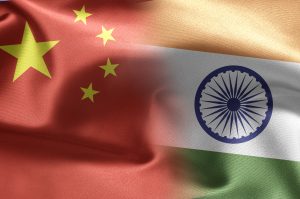On June 13, India’s External Affairs Minister S. Jaishankar, after assuming office for a second term, said that India would focus on finding solutions to border issues with China, which have long strained ties between the neighbors. The statement received an endorsement from U.S. Deputy Secretary of State Kurt Campbell, who pitched in to say, “I think the truth is that any time two countries can find a degree of the common space to reduce tensions, I think we have to support that.”
It is customary for foreign ministers to start their tenure with a sign of hope. Jaishankar was trying to do that. But as far as China-India bilateral relations are concerned, New Delhi has sent repeated signals that it will stick to its old position – “relations can’t improve unless normalcy is restored along the borders.”
On June 20, Reuters reported the Indian Civil Aviation Ministry’s rejection of China’s request to restart direct flights between the countries. Direct passenger flights by Chinese and Indian carriers, estimated to be 539 per month, halted in December 2019 amid the COVID-19 pandemic and have not restarted, forcing flyers from both countries to travel through Hong Kong or Southeast Asian countries to reach their destinations. While Beijing has indicated interest in restarting these flights, New Delhi has resisted, linking the move to the need to end the border standoffs.
There is, however, little prospect of the standoffs ending anytime soon. The last military-level dialogue, the mechanism both countries have relied on to resolve the conflict, took place in February 2024, without any indication of when the next will be held. That round of talks produced no results, just like the several that preceded it.
Beijing has made repeated pushes for normalization, without assuring any end to the border conflict. The Chinese Foreign Ministry was quick off the blocks to congratulate Prime Minister Narendra Modi on June 5, a day after the victory of the BJP-led NDA coalition in the general elections. Its ally Pakistan waited till June 10. The Chinese Foreign Ministry spokesperson said both India and China should “look to the future” to advance bilateral relations, on a “healthy and stable track.” However, there has been no congratulatory message from President Xi Jinping so far.
Campbell’s endorsement of Jaishankar’s message of hope also had a warning. Campbell said he believed that for any rapprochement, or substantial improvement in relations with China, India would expect changes in how Beijing treats their contested borders. “One of the things that we’ve seen under Xi Jinping on anything that bridges, or touches, territorial matters, I think it’s very hard for the Chinese to show any flexibility, or any desire to find common ground,” he said. It seems that the Indian foreign policymaking establishment is in conformity with Campbell’s assessment.
Not surprisingly, therefore, New Delhi has gone back to the ways it dealt with China in the last tenure of the NDA government. Among the invitees for the new government’s swearing-in ceremony on June 9 was Maldives President Mohamed Muizzu, considered to be an ally of Beijing. He attended along with some of the heads of state and governments from South Asian countries. Pakistan was left out.
On June 11, Indian media reported the government’s impending moves to rename about 30 places in Tibet, in response to China’s renaming of places in Aksai Chin and Arunachal Pradesh to show them as Chinese territories. Modi warmly responded to Taiwan President Lai Ching-te’s message of congratulations, attracting an angry reaction from the Chinese Foreign Ministry spokespersons. On June 20, Modi met with a bipartisan U.S. Congressional delegation led by Representative Michael McCaul in Delhi. Former House Speaker Nancy Pelosi was among those who were a part of the delegation. The same U.S. lawmakers had met Tibetan spiritual leader the Dalai Lama, with China expressing “strong concern” over the exchange.
On June 6, India was among the 13 nations that signed the U.S.-backed Indo-Pacific Economic Framework for Prosperity (IPEF) Clean Economy Agreement and the IPEF Fair Economy Agreement in Singapore. On June 19, India, Australia, and France met for the third “India-France-Australia trilateral focal points” meeting. The meeting represented India’s continued push toward a free, open, inclusive and rules-based Indo-Pacific through multilateral as well as minilateral forums, a move that is directed at China’s muscle flexing in the region.
After the formation of the new government, New Delhi has already hosted U.S. National Security Advisor Jake Sullivan to strengthen cooperation in high technology areas including defense, semiconductors, 5G wireless networks and artificial intelligence.
Even as China-India bilateral trade attains record heights, reaching $118.4 billion in fiscal year 2024, it appears New Delhi will continue to ignore Beijing’s moves for political rapprochement. China will not be a recipient of the Indian grace that facilitates meetings between Indian high officials including Modi with officials of other nations. In the past, New Delhi has refused multiple requests for a Modi-Xi bilateral meeting. It is unlikely that such favor would be granted any time soon.
Several key questions amid this new round of New Delhi’s hard posturing remain unanswered. Will it compel Beijing to resolve the border standoff to India’s satisfaction? Is a stalemate in India’s or Beijing’s interest? Will India’s China policy, considered to be largely a failure by the opposition parties in India, see any new moves that work to its advantage? In times of fluidity and fragmentation in the international order, India will have to navigate the turbulent waters to keep the Indo-Pacific free and its borders intact by deft diplomacy, clear signaling, new alliances, and preparedness.

































